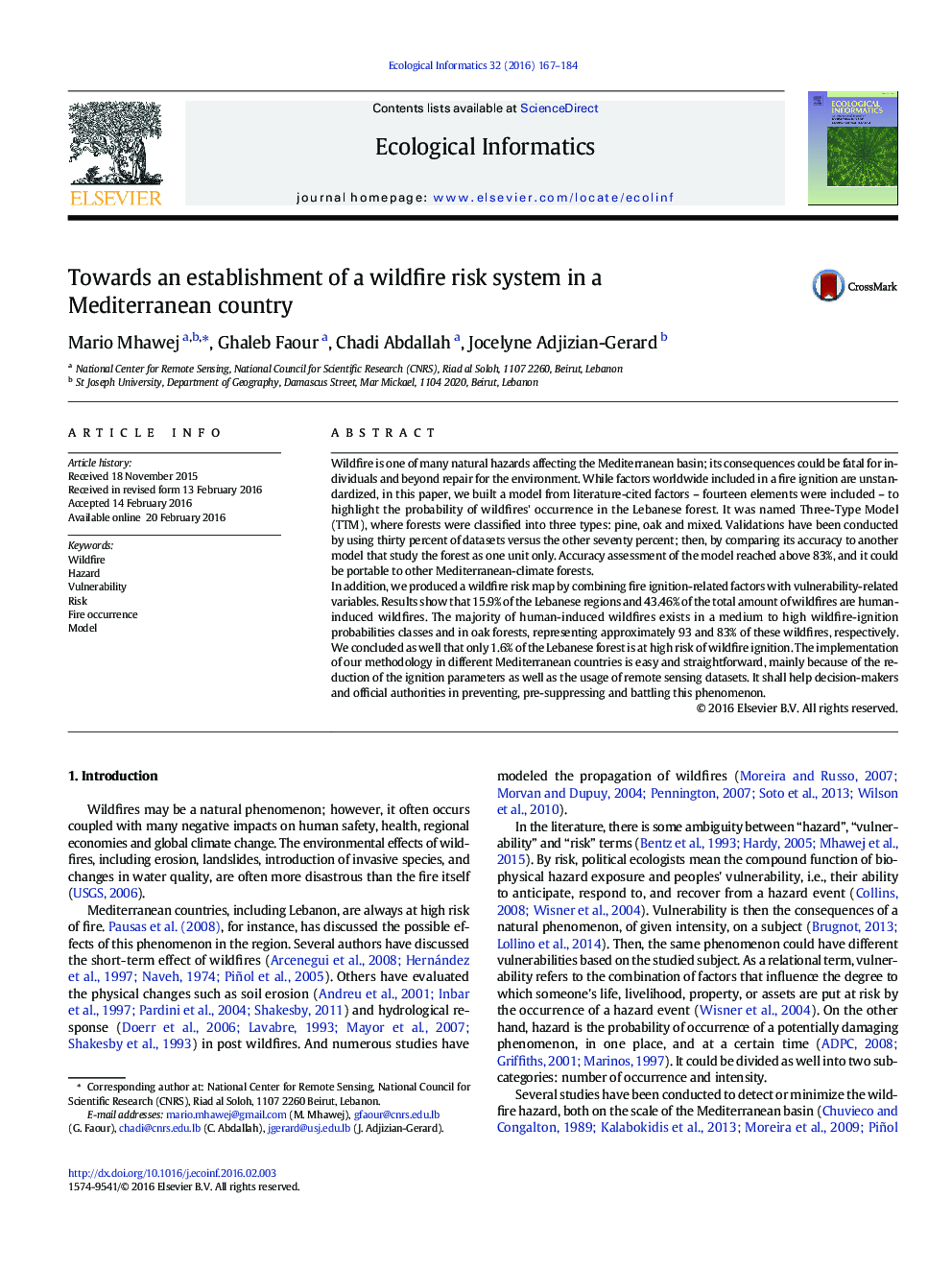| Article ID | Journal | Published Year | Pages | File Type |
|---|---|---|---|---|
| 6295856 | Ecological Informatics | 2016 | 18 Pages |
Abstract
In addition, we produced a wildfire risk map by combining fire ignition-related factors with vulnerability-related variables. Results show that 15.9% of the Lebanese regions and 43.46% of the total amount of wildfires are human-induced wildfires. The majority of human-induced wildfires exists in a medium to high wildfire-ignition probabilities classes and in oak forests, representing approximately 93 and 83% of these wildfires, respectively. We concluded as well that only 1.6% of the Lebanese forest is at high risk of wildfire ignition. The implementation of our methodology in different Mediterranean countries is easy and straightforward, mainly because of the reduction of the ignition parameters as well as the usage of remote sensing datasets. It shall help decision-makers and official authorities in preventing, pre-suppressing and battling this phenomenon.
Related Topics
Life Sciences
Agricultural and Biological Sciences
Ecology, Evolution, Behavior and Systematics
Authors
Mario Mhawej, Ghaleb Faour, Chadi Abdallah, Jocelyne Adjizian-Gerard,
